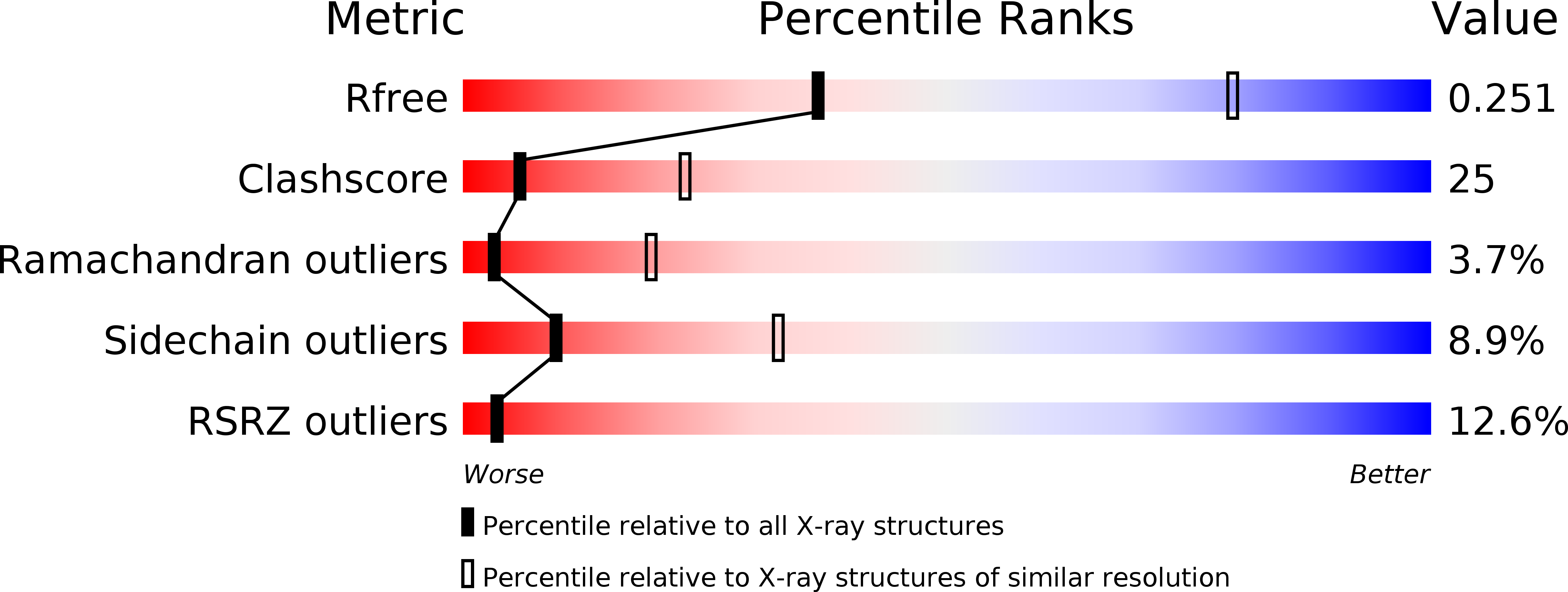
Deposition Date
2012-09-08
Release Date
2013-02-13
Last Version Date
2024-10-30
Entry Detail
PDB ID:
4H0L
Keywords:
Title:
Cytochrome b6f Complex Crystal Structure from Mastigocladus laminosus with n-Side Inhibitor NQNO
Biological Source:
Source Organism:
Mastigocladus laminosus (Taxon ID: 83541)
Method Details:
Experimental Method:
Resolution:
3.25 Å
R-Value Free:
0.24
R-Value Work:
0.21
R-Value Observed:
0.22
Space Group:
P 61 2 2


